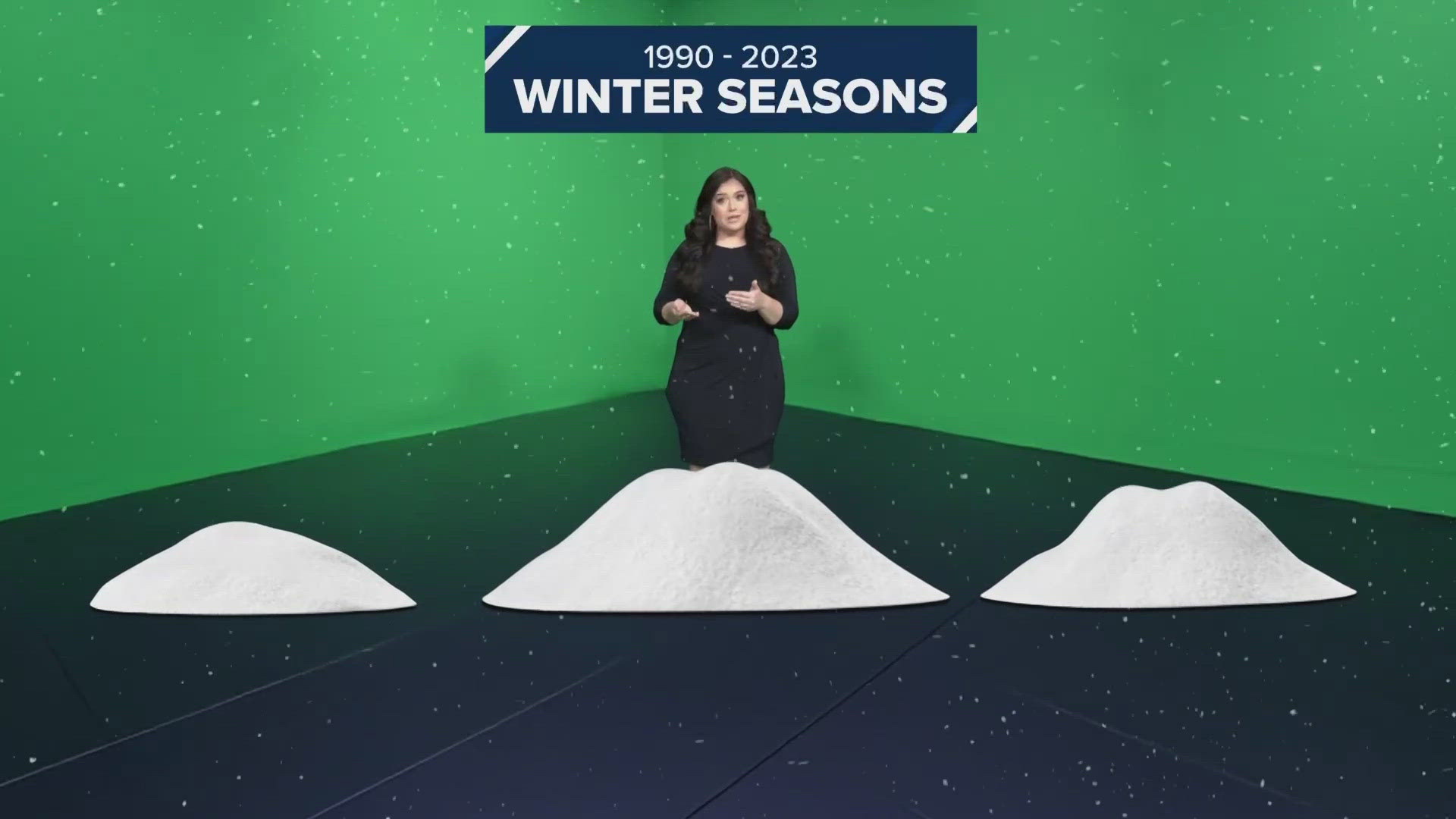Winter's chill without the thrill: The DMV's winter weather outlook
The forecast calls for a winter that is drier and milder than average.
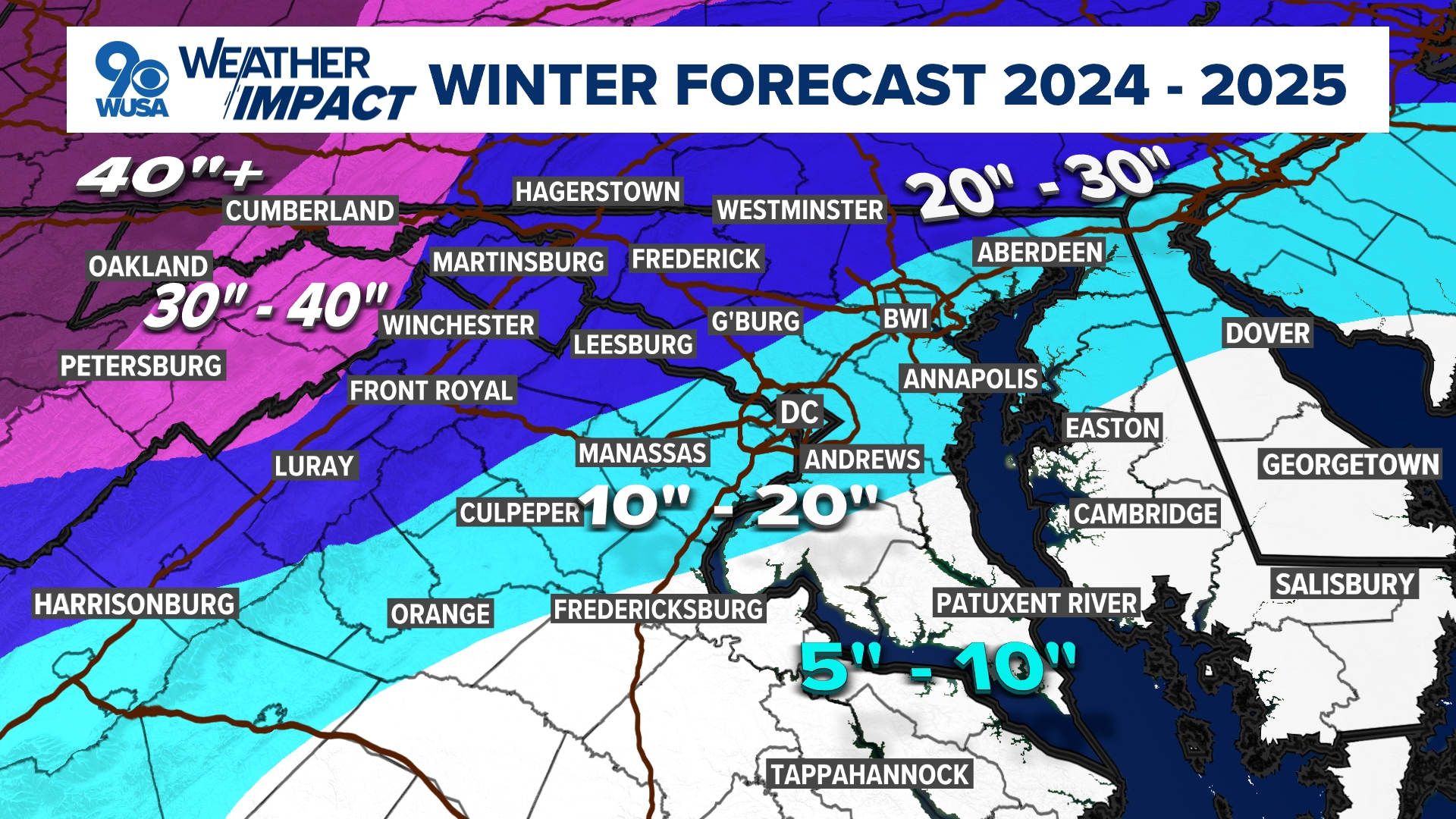
It’s that time of year again — your WUSA9 Weather Watch Team has put together the 2024-2025 Winter Weather Outlook.
Before we dive into what to expect this year, lets take a look at the past.
Winter 2022 - 2023 Not great for snow, but not the worst
Last winter wasn't a blast for snow, but it wasn't the worst when it comes to snowfall amounts. In the 2023 - 2024 winter season, D.C. picked up 8 inches of snow. Dulles picked up 11.7 inches.
In the 2022 - 2023 season, D.C. and Dulles only squeezed out 0.40 inches of snow, far below what we typically expect. Only two other winters recorded less snow.
But if you're familiar with the DMV climate, you know we can see both feast and famine in the snowfall department.
Remember February 2010? D.C., Dulles and BWI had a combined total of over 128 inches of snow. That's more than 10.5 feet in just one month!
As meteorologists, we include both feast and famine when analyzing snowfall trends, so keep that in mind while we go over these historical averages.
Here's the average snowfall from January 1990-December 2023:
D.C. 13.2 inches
Dulles 20.5 inches
BWI 18.5 inches
Now, if you're wondering why we haven't been getting anywhere near those average numbers over the past several decades, it's because between climate change and urbanization, our winters are getting warmer.
Warming Winters Why the average winter temps are rising
Over the past five decades, our region has seen winter average temperatures increase between three and five degrees. The University of Maryland Center for Environmental Science is projecting that winter months could warm an additional 4 to 10 degrees by 2080 if we can’t curb greenhouse gas emissions.
The top six of the ten warmest winters in D.C. since 1941 have been in the past 23 years. with last winter clocking in fourth place.
- 2022-2023 - 44.0°
- 2016-2017 - 43.9°
- 2011-2012 - 43.3°
- 2023-2024 - 43.2°
- 2001-2002 - 43.2°
- 2019-2020 - 42.8°
- 1949-1950 - 42.8°
- 1997-1998 - 42.5°
- 1948-1949 - 42.2°
- 2015-2016 - 42.0°
Of course there can still be cold winters in our changing climate. We still normally have a few stretches of extreme cold during the winter months when polar air sinks south. The likelihood of extreme cold conditions in a warming world is just decreasing.
Rest assured we’ll still have days with record cold temperatures; data shows it just won’t be as cold or for as long as in the past. And don’t worry snow lovers, we’ll still have storms even in the warmer years.
Back in 2016 between Jan. 22-23, D.C. picked up nearly 18 inches of snow. But that same winter ended up being our third warmest winter on record.
Let’s turn back the clock to the winter of 2009 and 2010 when D.C. had a blockbuster winter with over 56 inches of snow and below average temperatures. While there was no shortage of winter wonderland scenes, the season came to an abrupt and early halt with the final freeze on Feb. 27, which was the earliest final freeze on record.
La Niña vs. El Niño The 3 ENSO phases
The pattern, or "phase," of the El Niño Southern Oscillation, or ENSO, also plays a large part in the type of winter that we will see.
The three different ENSO phases are El Niño, neutral and La Niña. After a year of El Niño dominance, the pattern has finally released its grip on the tropical Pacific. We have been in a weak La Niña all summer and fall. All indications are that it will continue through the upcoming winter.

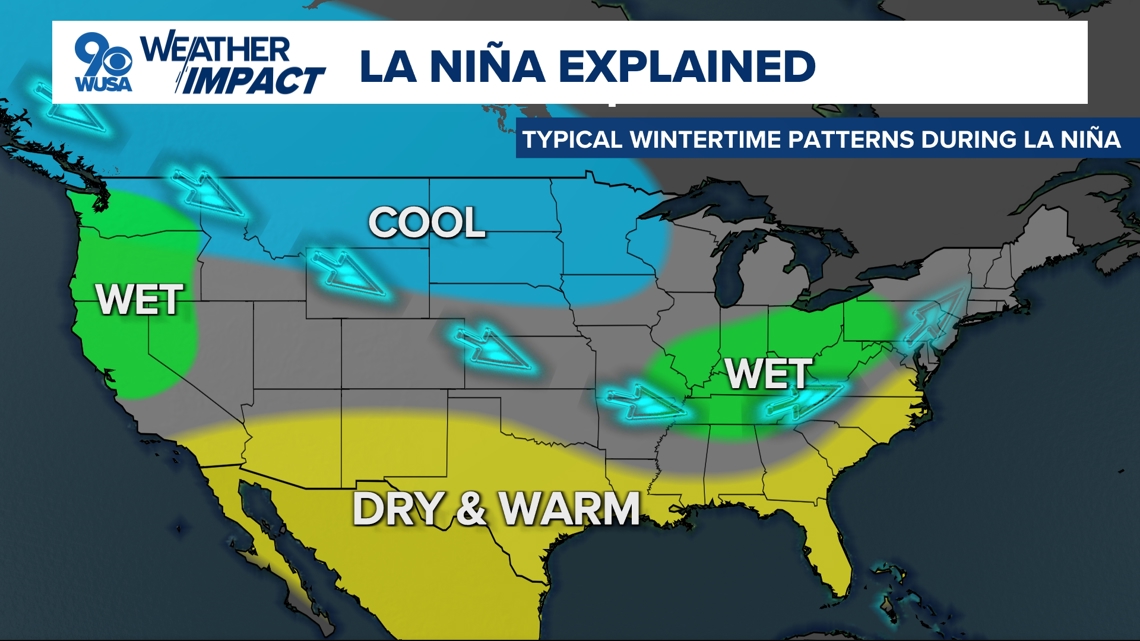
A La Niña pattern is usually generally a signal for a warmer than average winter. There really is no leaning toward more or less precipitation, but with warmer temperatures, though, one would assume less snow.
Research from our local National Weather Service Office done with records from Reagan National Airport, has determined that La Niña of most varying intensities, primarily leads to above average temperatures and below average precipitation and below average snowfall across the DMV.
The one exception to that rule is a moderate La Niña, and this leads to near or below average temperatures along with near-average precipitation, but above average snowfall.
Unfortunately for snow lovers, this winter is forecast to feature a weak, short-lived La Niña. This would equate to a warmer than average winter with below average snowfall, and below average precipitation overall.



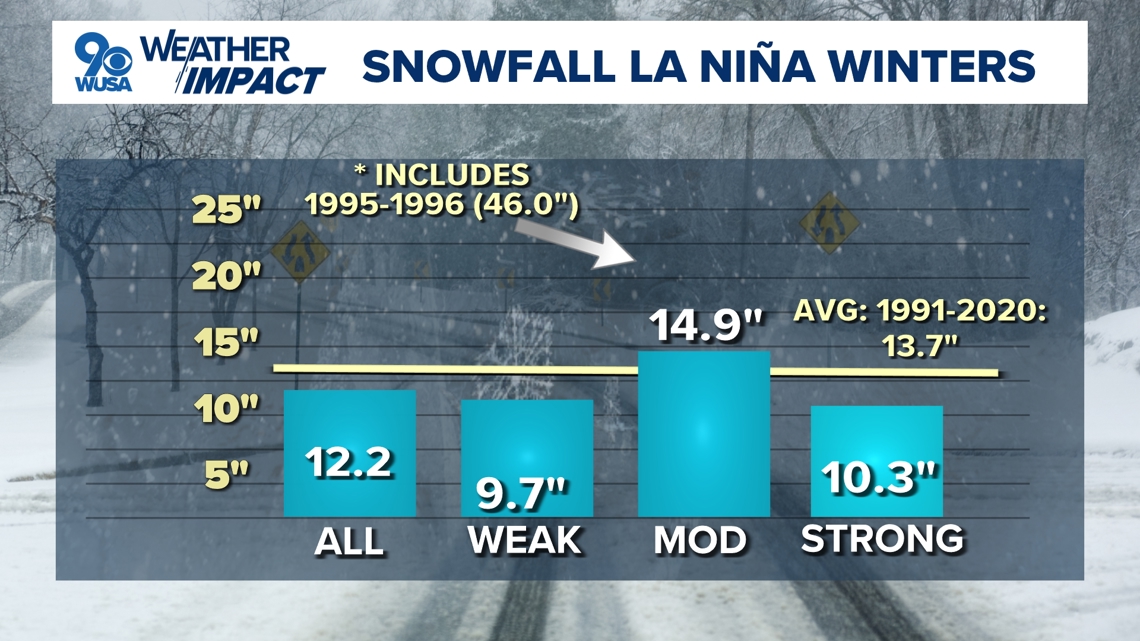
How much snow in the DMV? WUSA9 predictions for this winter
We are going against the stats a bit this winter. Here are our predicted local amounts for the winter of 2024 - 2025:

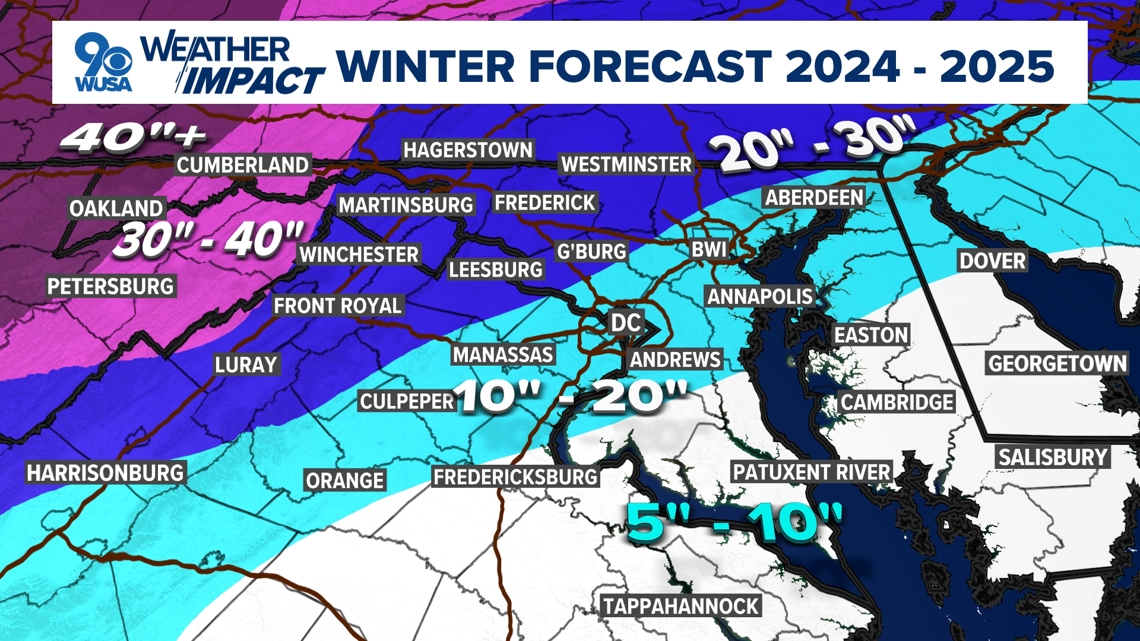
- National: 13"
- Dulles: 19"
- BWI: 18"
- Waldorf: 12" (Average: 16")
- Bowie: 15" (Average: 15")
- Rockville: 19" (Average: 21")
- Fairfax: 18" (Average 21")
- Leesburg: 23" (Average 22")
- Winchester: 20" (Average: 18")
- Hagerstown: 32" (Average: 33")
Drum roll please.... We are predicting the first snow between Christmas and New Year's.




